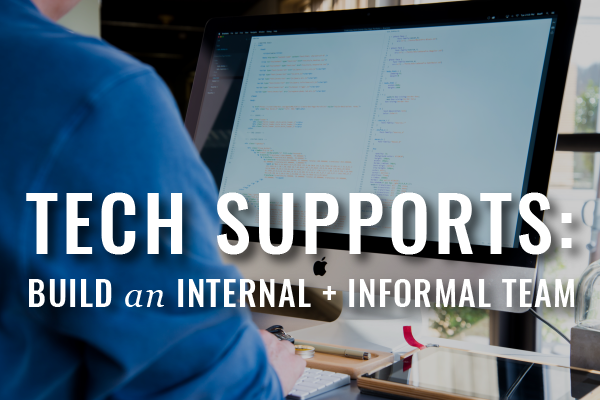Sometimes, when you buy software, you don’t just buy software; what may come attached are certain accoutrements, one of which may be a support package, which may be fairly costly in its own right, and oftentimes a continuing expense. The continued development of cloud products has meant an increase in intuitive applications, which require less customization — or, less customization that needs to be completed by outside consultants. That’s helpful, certainly; but, it doesn’t eliminate support packages in their entirety; and, considering that a number of law firms still rely on local applications, the burden remains generally uneased.
There are a number of types of technical support that law firms pay for in relation to technology products. There is implementation support, which can include initial customizations and data transfers, and may be provided in-person. There is continuing support, which may be offered through a variety of media (email, phone, chat, in-person). Continuing support options are varied; but, generally, the more you want, the more you’ll have to pay. Limited support packages may be reduced to a certain number of phone calls/inquiries/tickets over a settled period of time, limited to certain support service actions and/or to certain media (email only, e.g.). Business owners often try to finagle their support packages, in order to maximize what they can get for a minimum price.
There are certain scenarios in which technical support, at least related to local applications, will be required. However, there is another option for managing the majority of customizations, training and general inquires; and, it’s right under your nose. Your associates, your support staff, live in applications, and may be more comfortable using them they you are — in fact, they probably are. Most law firms don’t cultivate that expertise; and, situations pervade where everyone is using software at different levels, with varying degrees of success, with little help (or hope) of ramping up their knowledgebase, in an effort to increase their efficiency. For those staff who can’t figure out how certain features work, they develop workarounds, which may be detrimental to the spirit of a shared information repository. Worse still is when lawyers totally subvert the preferred technology applications, and go ‘off the grid’ — using their own preferred tools instead.
That simple, referenced solution, however, is at easy reach. Empower your associates and staff who are ‘power users’ to develop that interest, and to assist others who have not so well taken to the software products you use in your law firm. Hold trainings, which they lead; meld those trainings into your existing staff meetings, to underscore their importance. Create a ticketing systems for issues that arise in relation to your technology, and sit down with your power users to try to resolve those; cull training subjects from this method of issue spotting. Work with your power users to develop workflows and reporting that suit your needs; build out useful customizations, to save everyone’s time. It’s inherent within any office that certain people will have skills that others do not; those skills should be honored; and, rather than allowing an environment of jealousy fester, managers should allow specialists to operate within their specialty, and in assistance of others. Everyone’s skills will become useful at one time or another; and, those who are particularly adept at utilizing technology can become, if encouraged, a reliable, internal support network.
Not only does the above-relayed approach save money and time, and increase efficiency and productivity across the board, it promotes consistency and personal respect. Of course, lawyers have to do some things they have not been traditionally comfortable with, in order to make that happen: They need to give up some level of control, and empower their staffpersons. The majority of lawyers are control freaks. Now, that’s a great thing for managing a complex litigation to conclusion; however, it’s not so good for the development of a happy and healthy workplace. And, if you want the help in technical support, at at least some level, your staff is gonna have to buy-in to the system. That means you have to validate their ideas and suggestions, give them some amount of freedom to implement those and, in the first instance, seek their input about what technology to use, and on how to use it. There is no ‘I’ in internal technical support (well, there are two; but, that’s beside the point). The point is, if you empower your staff, they’ll empower you.
This article originally appeared in the Massachusetts Bar Association’s Lawyers Journal.
Techno Dabble: How To Build an Informal, Internal Support Network
This article is for informational purposes only. It is not intended to be used in place of professional advice, treatment, or care in any way. Lawyers, law students, judges, and other legal professionals in Massachusetts can find more on scheduling a Free & Confidential appointment with a licensed clinician here.




